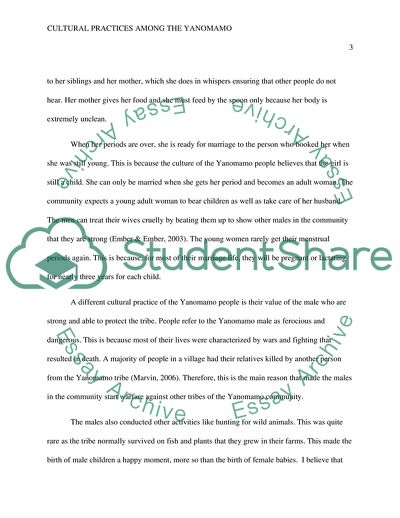Two Cultural Practices among the Yanomamo Research Paper. https://studentshare.org/anthropology/1772102-two-cultural-practices-among-the-yanomamo
Two Cultural Practices Among the Yanomamo Research Paper. https://studentshare.org/anthropology/1772102-two-cultural-practices-among-the-yanomamo.


